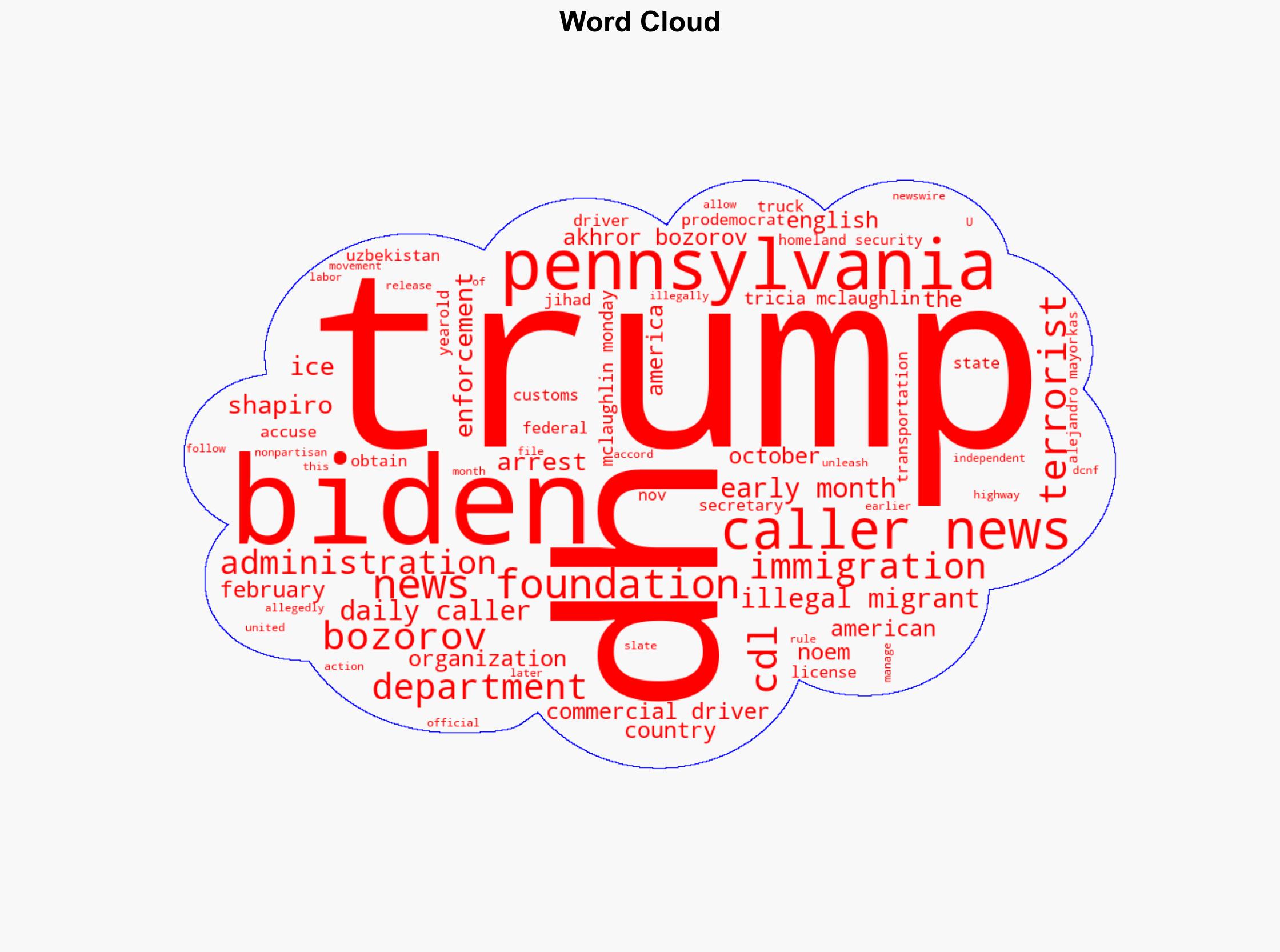Illegal Migrant Truck Driver Is Suspected Terrorist Let In By Biden – The Daily Caller
Published on: 2025-11-17
AI-powered OSINT brief from verified open sources. Automated NLP signal extraction with human verification. See our Methodology and Why WorldWideWatchers.
Intelligence Report:
1. BLUF (Bottom Line Up Front)
The most supported hypothesis is that Akhror Bozorov, an illegal migrant from Uzbekistan, exploited systemic vulnerabilities in the U.S. immigration and licensing systems to operate as a commercial truck driver, potentially posing a national security threat. Confidence level: Moderate. Recommended action includes tightening CDL issuance processes and enhancing inter-agency collaboration to monitor and mitigate potential threats.
2. Competing Hypotheses
Hypothesis 1: Akhror Bozorov is a genuine national security threat who infiltrated the U.S. systems to conduct terrorist activities, facilitated by policy gaps under the current administration.
Hypothesis 2: Bozorov’s case is an isolated incident of systemic failure, not indicative of a broader threat, and his alleged terrorist affiliations are overstated or misrepresented.
Hypothesis 1 is more likely due to the arrest and accusations from the Uzbek government, suggesting credible intelligence on his activities. However, the lack of publicly available corroborative evidence and potential political bias in reporting necessitate cautious interpretation.
3. Key Assumptions and Red Flags
Assumptions: The information provided by DHS and the Uzbek government is accurate and not politically motivated. The current U.S. immigration and CDL issuance processes have exploitable vulnerabilities.
Red Flags: The source of the report, The Daily Caller, may have political biases. The timing of the report could be politically motivated, given its alignment with criticisms of the current administration’s immigration policies.
4. Implications and Strategic Risks
The potential infiltration of national security threats through immigration and licensing systems poses significant risks, including terrorism and public safety threats. Politically, this could escalate tensions between political parties, affecting immigration policy debates. Economically, increased scrutiny and regulation could impact the trucking industry and labor markets.
5. Recommendations and Outlook
- Enhance vetting processes for CDL issuance, including mandatory background checks and inter-agency data sharing.
- Increase collaboration between DHS, ICE, and state governments to identify and mitigate potential threats.
- Conduct a comprehensive review of current immigration policies to address systemic vulnerabilities.
- Best Case: Strengthened policies prevent further infiltration, maintaining national security.
- Worst Case: Failure to address vulnerabilities leads to successful terrorist activities on U.S. soil.
- Most Likely: Incremental policy adjustments improve security but face political and logistical challenges.
6. Key Individuals and Entities
Akhror Bozorov, DHS Secretary Alejandro Mayorkas, Pennsylvania Governor Shapiro, Assistant DHS Secretary Tricia McLaughlin.
7. Thematic Tags
Structured Analytic Techniques Applied
- Cognitive Bias Stress Test: Expose and correct potential biases in assessments through red-teaming and structured challenge.
- Bayesian Scenario Modeling: Use probabilistic forecasting for conflict trajectories or escalation likelihood.
- Network Influence Mapping: Map relationships between state and non-state actors for impact estimation.
Explore more:
National Security Threats Briefs ·
Daily Summary ·
Support us
·





